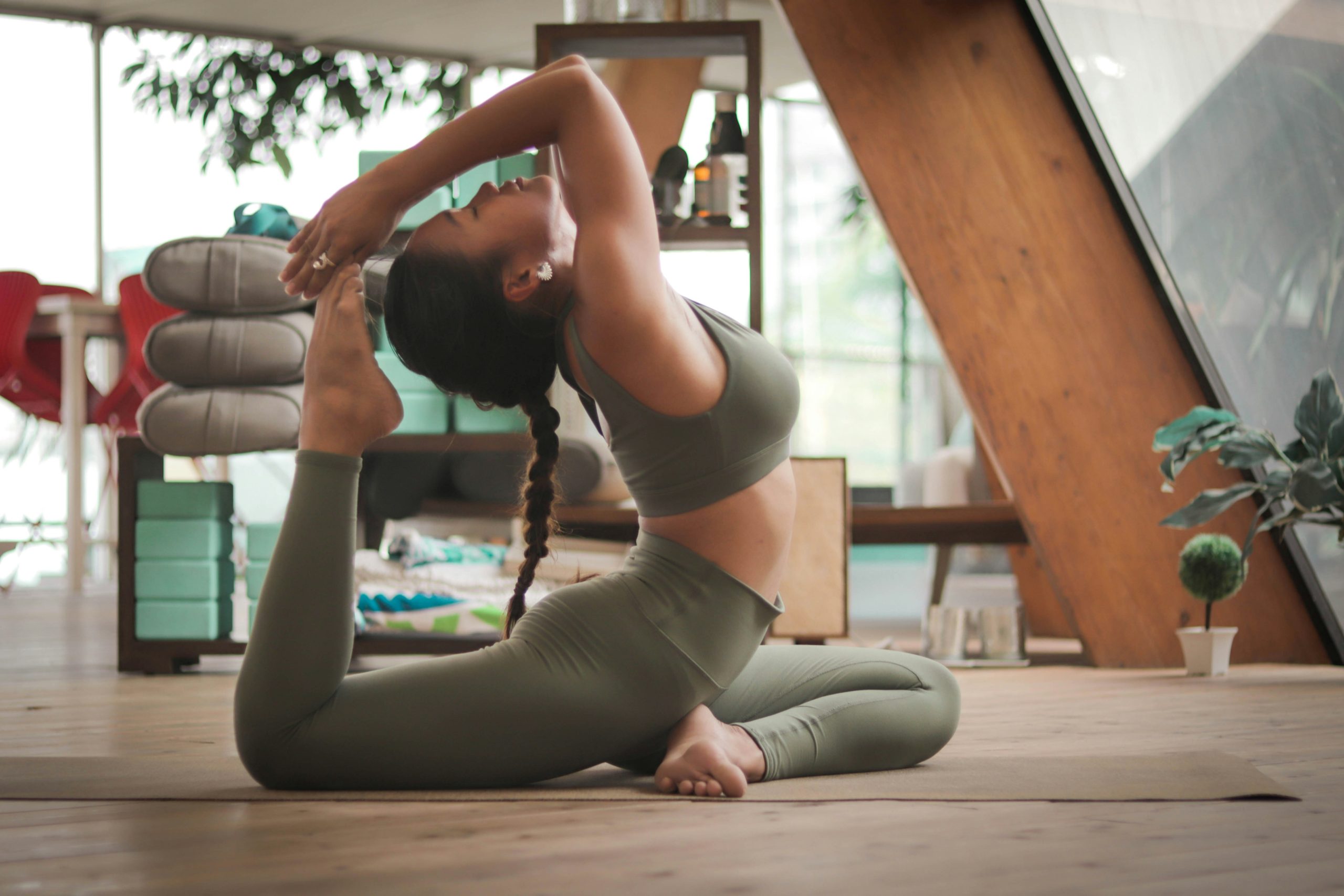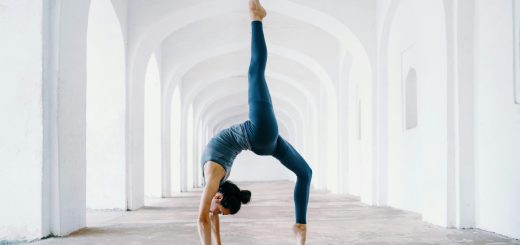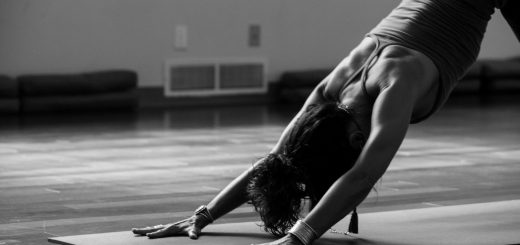Plank Pose Yoga: Strengthening the Core and Mind

Hey there, amazing readers! 🖐️ Just a quick note: yes, we know there are a lot of ads here. Trust us, we get it—it’s not the prettiest look, but they help us keep this blog alive and kicking. Those pesky little ads cover the costs of all the behind-the-scenes magic, from hosting and tech stuff to creating content we hope you’ll love.
We’re committed to delivering quality posts, and your support (even just sticking around despite the ads) means everything to us. So, bear with us, and thanks for helping us keep the good vibes rolling. Now, on to the fun stuff! 😉
TRANSLATE BUTTON AT THE END OF THE ARTICLE
Introduction: Plank Pose Yoga for a Strong Core and Mind
Plank pose yoga is a popular and effective exercise that targets the core muscles while also providing mental benefits.
It is a foundational pose in yoga that requires strength, stability, and mental focus.
Plank pose, or Phalakasana in Sanskrit, is often practiced as part of a Vinyasa or Sun Salutation sequence, but it can also be practiced on its own.
It is known for its ability to strengthen the core, improve balance and posture, and develop mental focus and stability.
What is Plank Pose Yoga?
Plank pose yoga is a simple yet challenging exercise that involves holding a position similar to the top of a push-up.
To get into plank pose, start in a high push-up position with your hands directly under your shoulders and your toes tucked under.
Your body should form a straight line from your head to your heels.
Engage your core muscles by drawing your navel toward your spine and lengthening your tailbone toward your heels.
Benefits of Practicing Plank Pose Yoga
Practicing plank pose yoga offers a wide range of benefits for both the body and mind.
Here are some of the key benefits:
Strengthening the Core: Plank pose is known for its ability to target and strengthen the core muscles, including the rectus abdominis, transverse abdominis, and obliques.
Regular practice can lead to a toned and strong core.
Improving Balance and Posture: Plank pose requires a strong and stable core, which is essential for maintaining good balance and posture.
By practicing plank pose regularly, you can improve your overall body alignment and reduce the risk of injuries caused by poor posture.
Developing Mental Focus and Stability: Holding plank pose requires concentration and mental focus.
The longer you can hold the pose, the more your mental resilience and stability will improve.
This can translate to other areas of your life, helping you stay focused and calm in challenging situations.
Building Upper Body Strength: Plank pose not only targets the core but also engages the muscles in the arms, shoulders, and back.
Regular practice can lead to increased upper body strength and improved muscle definition.
Boosting Metabolism: Plank pose is a full-body exercise that activates multiple muscle groups simultaneously.
This can help increase your heart rate, boost your metabolism, and promote calorie burning.
Enhancing Flexibility: Plank pose also helps stretch and strengthen the muscles in the legs, hips, and hamstrings.
Over time, regular practice can improve your overall flexibility and range of motion.
Strengthening Your Core with Plank Pose Yoga
One of the primary benefits of practicing plank pose yoga is the strengthening of the core muscles.
The core muscles are essential for stability and maintaining proper posture.
Plank pose specifically targets the rectus abdominis, transverse abdominis, and obliques.
To effectively strengthen your core with plank pose yoga, follow these tips:
Engage your core: Before getting into plank pose, engage your core muscles by drawing your navel toward your spine.
This will create a strong foundation and activate your core muscles.
Maintain a straight line: Keep your body in a straight line from your head to your heels throughout the pose.
Avoid sagging or arching your back, as this can put strain on your lower back and diminish the effectiveness of the exercise.
Breathe deeply: Focus on deep, steady breathing while holding plank pose.
This will help you maintain focus and engage your core muscles even more.
Increase hold time gradually: Start with holding plank pose for 20-30 seconds and gradually increase the duration as your strength improves.
Aim to hold the pose for at least one minute for maximum benefit.
Add variations: As you become more comfortable with the basic plank pose, you can add variations to challenge your core muscles even more.
Some variations include side plank, plank with leg lifts, and forearm plank.
By incorporating plank pose into your regular yoga practice, you can effectively strengthen your core and improve overall stability.
Improving Balance and Posture through Plank Pose Yoga
In addition to strengthening the core, practicing plank pose yoga can also improve balance and posture.
Good balance and posture are essential for overall physical well-being and can help prevent injuries.
Here are some ways plank pose yoga can improve balance and posture:
Engage the core: Plank pose requires you to engage your core muscles to maintain stability.
By consistently practicing this pose, you will develop a stronger core, which is crucial for maintaining good balance and proper posture.
Strengthen the muscles supporting the spine: Plank pose targets the muscles in the back, including the erector spinae, which support the spine and help maintain proper alignment.
By strengthening these muscles, you can improve your overall posture and reduce the risk of back pain.
Focus on body alignment: Pay attention to your body alignment while in plank pose.
Ensure that your shoulders are directly above your wrists and that your body forms a straight line from your head to your heels.
This alignment will help train your body to maintain proper posture even when you’re not in the pose.
Practice balance exercises: Alongside plank pose, incorporate balance exercises into your routine to further improve your balance.
Examples include tree pose, warrior III, and standing balances.
These poses challenge your stability and help develop the muscles responsible for balance.
By consistently practicing plank pose yoga and focusing on good alignment, you can improve your balance and posture, leading to better overall physical health.
Developing Mental Focus and Stability with Plank Pose Yoga
Plank pose yoga not only offers physical benefits but also provides an opportunity to develop mental focus and stability.
Holding the pose requires concentration, willpower, and mental resilience.
Here are some ways plank pose yoga can help develop mental focus and stability:
Stay present: While in plank pose, focus on the present moment and the sensations in your body.
Pay attention to your breath and how it feels to engage your core muscles.
By staying present, you can cultivate a sense of mindfulness and mental focus.
Practice deep breathing: Deep breathing is essential for maintaining stability in plank pose.
By focusing on deep, rhythmic breathing, you can calm your mind and stay focused on the task at hand.
Challenge your limits: Pushing your limits in plank pose can help develop mental resilience and stability.
Gradually increase the duration of the pose and challenge yourself to hold it for longer periods.
This can train your mind to stay focused and calm even in challenging situations.
Visualize strength and stability: Before getting into plank pose, visualize yourself as strong and stable.
Imagine yourself holding the pose effortlessly and with ease.
This positive visualization can help boost your confidence and mental focus.
By incorporating mental focus and stability into your plank pose yoga practice, you can enhance your overall well-being and cultivate a calm and centered mind.
Variations of Plank Pose Yoga for Different Fitness Levels
Plank pose yoga offers various variations that cater to different fitness levels and goals.
Whether you’re a beginner or an advanced yogi, there’s a plank pose variation for you.
Here are some plank pose variations you can try:
Knee Plank: This variation is suitable for beginners or those with wrist or shoulder issues.
Instead of being on your toes, lower your knees to the ground while maintaining a straight line from your head to your knees.
Side Plank: Side plank is an excellent variation for targeting the oblique muscles and improving overall core strength.
From plank pose, shift your weight onto one hand and rotate your body, extending the opposite arm towards the ceiling.
Stack your feet or stagger them for stability.
Plank with Leg Lift: This variation adds an extra challenge by incorporating leg lifts.
From plank pose, lift one leg off the ground while maintaining a straight line in your body.
Alternate legs for an additional challenge.
Forearm Plank: Forearm plank is similar to traditional plank pose, but instead of being on your hands, lower down to your forearms.
This variation puts less strain on the wrists and engages the muscles in your arms and shoulders.
Experiment with these variations and find the ones that suit your fitness level and goals.
Remember to listen to your body and only attempt variations that you feel comfortable and stable in.
Precautions and Safety Measures for Practicing Plank Pose Yoga
While plank pose yoga offers numerous benefits, it’s essential to practice with caution and take necessary precautions to avoid injuries.
Here are some safety measures to keep in mind:
Warm-up: Always warm up your body before attempting plank pose.
Do some gentle stretches to prepare your muscles and joints for the pose.
This will help prevent strain and potential injuries.
Listen to your body: Pay attention to any discomfort or pain while in plank pose.
If you experience sharp pain or feel unsteady, it’s important to modify or come out of the pose.
Pushing through pain can lead to injuries.
Avoid excessive strain on the wrists: If you have existing wrist issues or are prone to wrist pain, modify the pose by using yoga blocks or practicing forearm plank instead.
This will reduce strain on the wrists without compromising the benefits of the pose.
Engage the entire body: While plank pose primarily targets the core, it’s important to engage the muscles in the arms, shoulders, and legs as well.
Distributing the effort throughout the body can help prevent muscle imbalances and reduce the risk of injuries.
Gradually increase intensity: If you’re a beginner, start with shorter durations and gradually increase the duration and intensity of the pose.
This will allow your body to adapt and build strength gradually, reducing the risk of strain or overexertion.
By practicing with caution and listening to your body, you can safely enjoy the benefits of plank pose yoga without the risk of injuries.
Proper Alignment and Technique for Plank Pose Yoga
Proper alignment and technique are crucial for getting the most out of your plank pose yoga practice.
Here are some key alignment tips to ensure you’re practicing the pose correctly:
Hands and Shoulders: Place your hands directly under your shoulders, shoulder-width apart.
Spread your fingers wide and press into your palms to engage the muscles in your arms and shoulders.
Spine and Core: Keep your spine in a neutral position and engage your core muscles by drawing your navel toward your spine.
This will create a strong and stable foundation for the pose.
Hips: Avoid lifting your hips too high or letting them sink toward the ground.
Keep your hips in line with your shoulders and maintain a straight line from your head to your heels.
Legs: Keep your legs engaged and extend them fully, pressing through your heels.
Avoid locking your knees and aim to maintain a slight bend in them.
Gaze: Direct your gaze slightly forward, keeping your neck in line with your spine.
Avoid looking up or letting your head drop.
By paying attention to proper alignment and technique, you can maximize the benefits of plank pose yoga and avoid strain or injuries.
Incorporating Plank Pose Yoga into Your Daily Routine
To make the most of plank pose yoga, it’s important to incorporate it into your daily routine.
This will ensure consistency and help you reap the full benefits of the pose.
Here are some tips for incorporating plank pose into your daily routine:
Choose a convenient time: Find a time that works best for you and commit to practicing plank pose yoga daily.
Whether it’s in the morning, during your lunch break, or in the evening, consistency is key.
Start with shorter durations: If you’re new to plank pose, start with shorter durations and gradually increase the duration as your strength improves.
This will help you build endurance and prevent burnout.
Pair it with other exercises: Combine plank pose with other exercises to create a balanced workout routine.
For example, you can add plank pose to your strength training routine or incorporate it into your yoga practice.
Track your progress: Keep a record of how long you can hold plank pose and track your progress over time.
This will help you stay motivated and see the improvements in your strength and stability.
Make it a habit: Create a habit around plank pose yoga by setting a specific time and place for your practice.
The more you integrate it into your daily routine, the easier it will become to stick with it.
By making plank pose yoga a regular part of your daily routine, you can experience the full range of benefits and strengthen both your core and mind.
Tips for Getting the Most out of Plank Pose Yoga
To get the most out of your plank pose yoga practice, consider these helpful tips:
Focus on proper form: Pay attention to your form and alignment while in plank pose.
Quality is more important than quantity, so prioritize maintaining a straight line from head to heels and engaging your core muscles.
Breathe deeply: Deep breathing not only helps you stay focused but also engages your core muscles even more.
Practice deep, rhythmic breathing throughout your plank pose practice.
Use a timer: Use a timer to track your progress and increase your hold time gradually.
This will help you stay motivated and challenge yourself to hold the pose for longer durations.
Stay present: While in plank pose, focus on the present moment and the sensations in your body.
Avoid letting your mind wander and cultivate a sense of mindfulness.
Take breaks when needed: If you need to take a break during plank pose, listen to your body and do so.
It’s better to take short breaks and maintain proper form than to push through fatigue and compromise your alignment.
Stay hydrated: Drink plenty of water before and after your plank pose practice to stay hydrated.
Proper hydration is essential for muscle function and recovery.
Pair with complementary exercises: Combine plank pose with exercises that target other muscle groups for a well-rounded workout.
This can include exercises like squats, lunges, or push-ups.
Consult a yoga instructor: If you’re new to plank pose or have specific health concerns, it can be beneficial to consult a qualified yoga instructor.
They can guide you on proper form and help you modify the pose if needed.
By implementing these tips, you can enhance your plank pose yoga practice and make the most of its physical and mental benefits.
Conclusion: Embrace the Power of Plank Pose Yoga
Plank pose yoga is a powerful exercise that strengthens not only your core but also your mind.
It offers a range of benefits, including improved core strength, better balance and posture, enhanced mental focus and stability, and increased upper body strength.
By practicing with proper form and alignment, incorporating variations, and gradually increasing intensity, you can safely and effectively strengthen your core and develop mental resilience.
Remember to prioritize safety and listen to your body while practicing plank pose.
If you experience any pain or discomfort, modify the pose or seek guidance from a qualified yoga instructor.
By making plank pose a regular part of your daily routine and incorporating it into your workout regimen, you can harness its transformative power and enjoy the many benefits it offers.
So, embrace the power of plank pose yoga and watch your core and mind thrive.

The Enlightenment Journey is a remarkable collection of writings authored by a distinguished group of experts in the fields of spirituality, new age, and esoteric knowledge.
This anthology features a diverse assembly of well-experienced authors who bring their profound insights and credible perspectives to the forefront.
Each contributor possesses a wealth of knowledge and wisdom, making them authorities in their respective domains.
Together, they offer readers a transformative journey into the realms of spiritual growth, self-discovery, and esoteric enlightenment.
The Enlightenment Journey is a testament to the collective expertise of these luminaries, providing readers with a rich tapestry of ideas and information to illuminate their spiritual path.
Our Diverse Expertise 🌟
While our primary focus is on spirituality and esotericism, we are equally passionate about exploring a wide range of other topics and niches 🌍📚. Our experienced team is dedicated to delivering high-quality, informative content across various subjects ✨.
To ensure we provide the most accurate and valuable insights, we collaborate with trusted experts in their respective domains 🧑🏫👩🏫. This allows us to offer well-rounded perspectives and knowledge to our readers.
Our blog originally focused on spirituality and metaphysics, but we’ve since expanded to cover a wide range of niches. Don’t worry—we continue to publish a lot of articles on spirituality! Frequently visit our blog to explore our diverse content and stay tuned for more insightful reads.





















